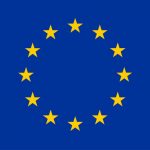Alzheimer’s disease and early diagnosis
The Alzheimer’s disease (AD) is a progressive and irreversible neurodegenerative disorder, which leads to death. It represents the major cause of dementia in the elderly population, with a great socio-economic impact in the worldwide community. Estimates vary, but experts evaluated that nowadays around 30 millions of people are affected by AD and, taking into account the increase of life expectation, this community is likely to rise to about 150 million people by 2050. The current guidelines for clinical diagnosis of AD establish the determination of specific protein biomarkers (Amyloid-beta, tau, P-tau) in cerebrospinal fluid (CSF) through ELISA kit and positron emission tomography (PET) of the brain with amyloid tracer. However, PET is highly expensive and not always available in clinics and lumbar puncture for CSF collection is an extreme invasive intervention that requires hospitalization and hinders follow-up programs during therapies. Nowadays the traditional ELISA kits cannot determine such biomarkers in peripheral blood due to their abundance well below the standard sensitivity that is of 50-100 pg/mL. Therefore, by the time it is recognized, the disease has been progressing for many years. In this framework an early diagnosis of AD is crucial for saving lives.
Our mission
SensApp aims at developing a super-sensor system that, pushing the sensitivity well below 1 pg/mL, will be able to detect the AD biomarkers (Amyloid-beta, tau, P-tau) in human plasma, thus overcoming the limits of detection usually encountered by standard ELISA protocols. This super-sensor will enable in future a faster and non-invasive early diagnosis of AD simply through a routine blood test, thus opening the route to highly efficient screening programs among the population.
About us
This project has received funding from the European Union’s Horizon 2020 research and innovation programme under grant agreement No 829104
SensApp is a FET-open project funded by the Horizon 2020 funding programme of the European Commission.
It is led by a consortium of 6 European partners, which include research centres, universities and one company.
For more information on FET-open projects, visit the European Commission website.






